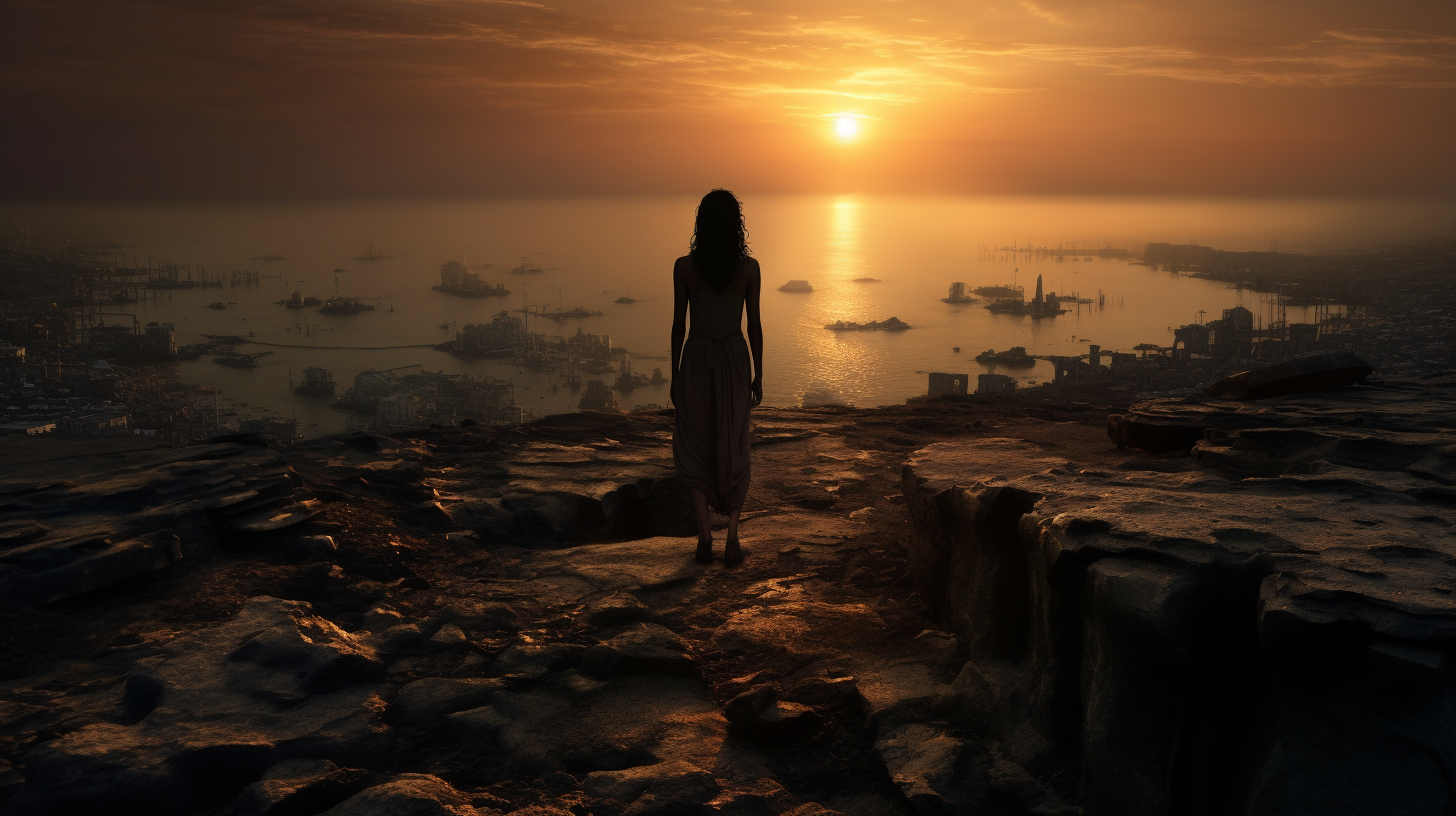In the bleak reality of our irreversible climatic apocalypse, the remnants of humanity cling to a paradox—a new dawn heralded by an irreversible dusk. Horizon’s End, a term that once evoked the romanticism of infinite possibilities, has taken a dreadfully literal turn; it now signifies the collapse of ecosystems, the submergence of coastal cities, and the heart-wrenching extinction of flora and fauna at an unprecedented rate. Yet, amidst the harrowing scenes of desolation, a question emerges from the ashes: can this ‘Horizon’s End’ spell new beginnings for the survivors of calamity?
The vast swathes of barren land where forests once stood tall are now silent witnesses to nature’s relentless suffering. Environmental neglect has reached a crescendo. Metropoles that were once the nucleus of civilization are inundated, leaving behind an eerie silence amidst their submerged skyscrapers—a dire testament to Greta’s unheeded omens.
A new breed of survivors emerges in these end times, those who scavenge the ruins not for treasures of the old world, but for seeds of the future. In hidden enclaves, they pioneer agriculture that does not borrow from the soil but enriches it. They build homes not as conquerors of nature, but as humble guests of the earth. These survivors crafted a lifestyle that, while austere, is a mosaic of innovation, resilience, and a testimonial to the indomitable human spirit.
Inhabitants of what was once hailed as the urban zenith now delve into the detritus of their former lives to forge tools from scraps. Reveling in minimalism, their crude yet functional creations represent a silent rebellion against the consumerism that once fueled the engine of ecological demise. There, among the ghosts of fallen cities, a lesson is hard-learned: opulence is the foe of survival.
Aquatic communities have begun to thrive in unexpected places, giving rise to a bizarre aquaculture that sustains life amidst the brine of sunken dreams. What was the ocean floor is now fertile ground for experimentation with resilient maritime flora that can withstand the salinity of a world overtaken by rising sea levels. These communities, floating on the surface of reality’s watery grave, symbolize the adaptability requisite in facing nature’s unchecked wrath.
Through all of this, the fallen Horizon whispers a curious query into the ear of humanity—‘Can you reinvent yourselves within the ruins of your own making?’ There is no tapestry of folklore to guide them, no fountain of hope that promises rejuvenation. The essence of humanity’s response lies in the understanding that hope, in this autumnal epoch of the human race, is a luxury that nature itself can no longer afford to provide.
Against this desolate backdrop, the article paints a picture of humanity adapting and reinventing life in the direst of circumstances, moving from a society of excess to one of necessity. It conjures both fascination and a harrowing reminder of the potential future that awaits—if urgent action remains unheeded.
Indeed, the eerie beauty of Horizon’s End captivates the imagination. It portrays the potential for inception in termination, creativity in calamity, and existential transformation as a byproduct of cataclysm. The ambiguity of human destiny glimmers faintly in the shadowed glades of our once-lush planet. The reality is stark, grim; it is not a tale of redemption or triumph but a somber narrative of adaptation and survival against overwhelming odds. The ultimate query lingers—can Horizon’s End spell new beginnings? Or is it merely the prelude to humanity’s swan song, echoing into the void?
